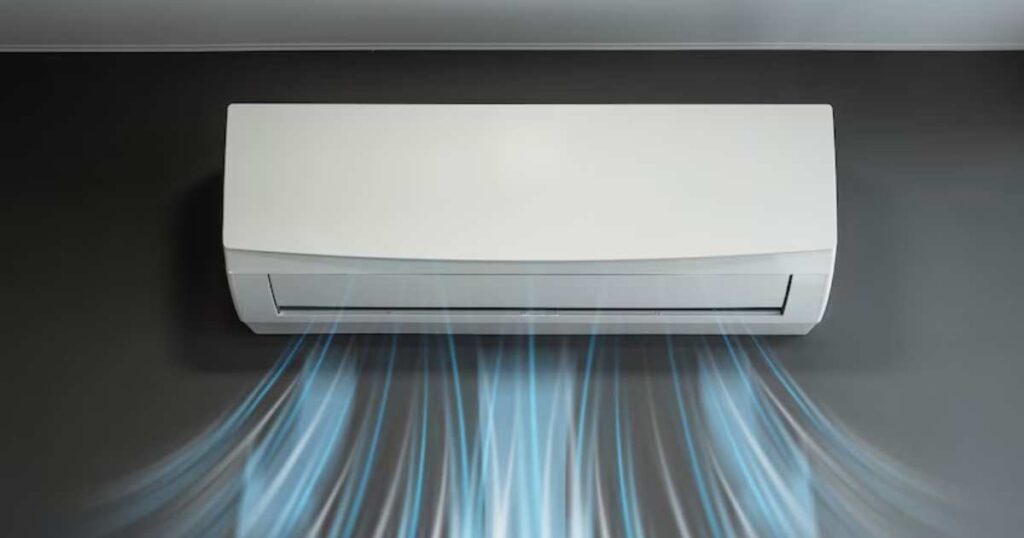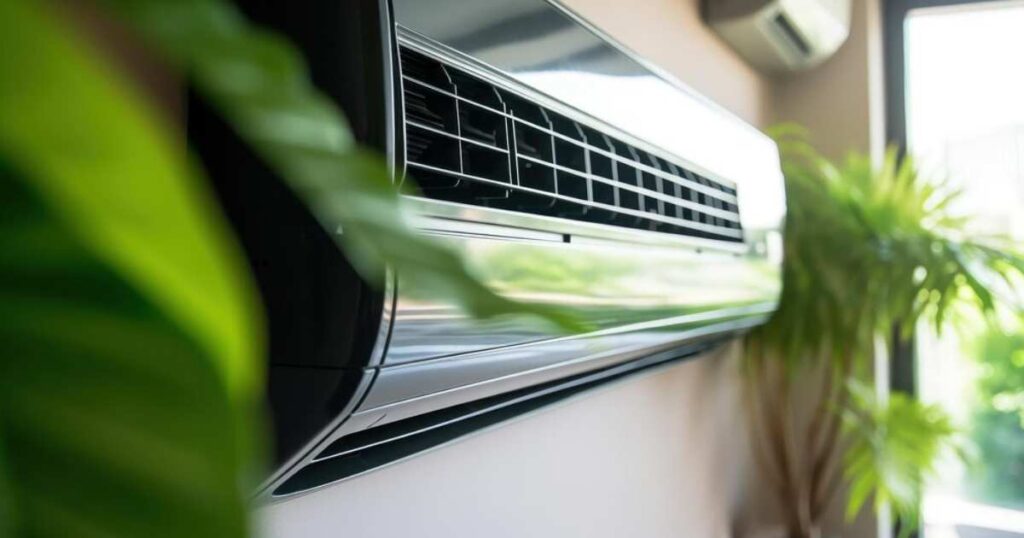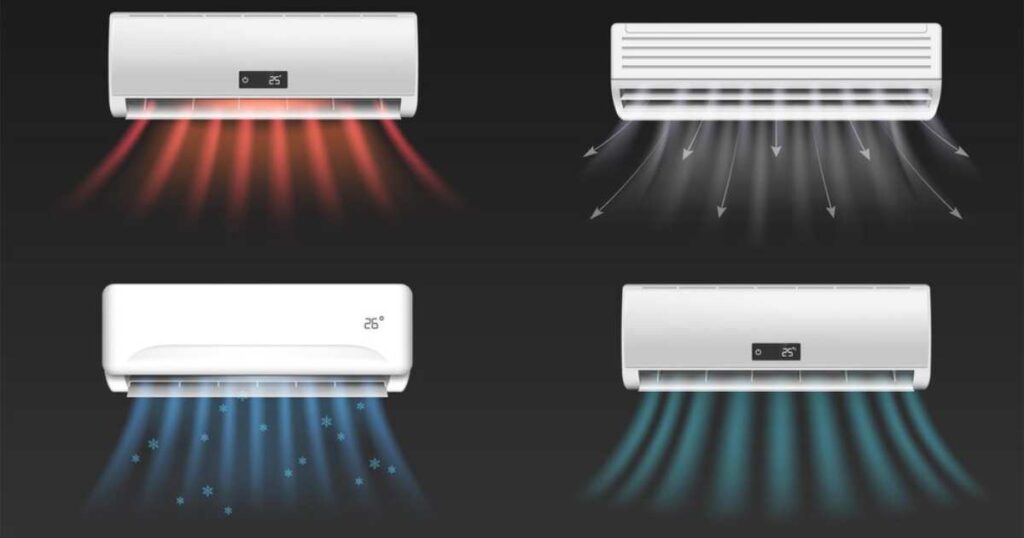Are you considering upgrading your home’s heating and cooling system? Have you heard about ductless mini-splits but aren’t sure if they’re the right choice for you?
Look no further! In this comprehensive guide, we’ll uncover the truth about these innovative systems, exploring their inner workings, advantages, drawbacks, and cost-effectiveness.
Whether you’re a homeowner seeking energy efficiency or a contractor looking to expand your expertise, this article will provide you with valuable insights into the world of ductless mini-splits.
Get ready to dive into the details and discover if this cutting-edge technology is the perfect solution for your heating and cooling needs.
How Ductless Mini-Split Systems Work
Ductless mini-split systems are a unique and efficient alternative to traditional central air conditioning units.
Unlike conventional systems that rely on a network of ducts to distribute conditioned air throughout the home, mini-splits operate on a different principle.
These systems consist of two main components: an outdoor unit that houses the compressor and condenser, and one or more indoor air-handling units.
The outdoor unit is responsible for transferring heat between the refrigerant and the outside air, while the indoor units distribute the conditioned air directly into the living spaces.
These indoor units can be wall-mounted, ceiling-mounted, or even floor-mounted, offering flexibility in installation and placement.
One of the key advantages of ductless mini-splits is their ability to provide zoned heating and cooling.
Each indoor unit has its own thermostat, allowing you to control the temperature in individual rooms or zones.
This feature not only enhances comfort but also contributes to energy savings by only conditioning the occupied areas of your home.
Benefits of a Ductless Mini-Split Heating and Cooling System

Ductless mini-split systems offer a range of benefits that make them an attractive choice for homeowners and contractors alike. Here are some of the most notable advantages:
- Energy Efficiency: By eliminating the need for extensive ductwork, mini-splits significantly reduce energy losses associated with traditional forced-air systems. This translates into lower utility bills and a more environmentally friendly heating and cooling solution.
- Zoned Temperature Control: As mentioned earlier, the ability to control the temperature in individual rooms or zones is a game-changer. This feature allows for personalized comfort and optimized energy usage, ensuring you’re not wasting energy on unoccupied areas.
- Flexibility and Easy Installation: Ductless mini-splits are incredibly flexible when it comes to installation. They can be installed in homes without existing ductwork, making them an excellent option for renovations, additions, or new construction.
- Improved Indoor Air Quality: Mini-splits are equipped with advanced air filtration systems that help remove airborne contaminants, such as dust, pollen, and allergens, promoting a healthier indoor environment.
- Quiet Operation: Compared to traditional HVAC systems, ductless mini-splits operate quietly, ensuring a peaceful and comfortable living space without disruptive noise.
Disadvantages of Ductless Mini-Splits
While ductless mini-split systems offer numerous benefits, it’s essential to be aware of their potential drawbacks:
- Higher Upfront Cost: The initial investment for a ductless mini-split system can be higher than traditional central air conditioning units, especially when multiple indoor units are required.
- Limited Cooling Capacity: Mini-splits are designed for specific cooling and heating capacities, which may not be suitable for larger homes or spaces with high cooling demands.
- Aesthetic Considerations: The indoor units of mini-split systems can be visible and may not blend seamlessly with certain interior design aesthetics.
- Professional Installation Required: Proper installation by a qualified HVAC professional is crucial for optimal performance and efficiency. Improper installation can lead to issues such as leaks, inefficient operation, and potential system failures.
The Cost of Mini-Split Systems Compared to Central Air Systems
When it comes to the cost of ductless mini-split systems, there are several factors to consider. Although you may initially invest more compared to traditional central air conditioning units, you can significantly lower long-term operating costs due to their energy efficiency.
Here’s a breakdown of the potential costs associated with mini-split systems:
- Equipment Cost: The cost of a ductless mini-split system can range from $2,000 to $10,000 or more, depending on the size of the unit, the number of indoor units required, and the brand.
- Installation Cost: Professional installation is a must for mini-split systems, and the cost can vary based on the complexity of the project, the location of the outdoor unit, and any necessary modifications to your home.
- Operating Cost: While the initial investment may be higher, the operating costs of ductless mini-splits are typically lower than traditional central air systems due to their energy efficiency and zoned temperature control.
It’s important to note that the cost of a mini-split system can vary significantly based on your specific needs and the size of your home.
Consulting with an HVAC professional can help you determine the most cost-effective solution for your heating and cooling requirements.
Maintenance Tips to Keep Your Mini-Split Running Smoothly
Like any HVAC system, proper maintenance is crucial to ensure the longevity and optimal performance of your ductless mini-split. Here are some tips to keep your system running smoothly:
- Clean or Replace Air Filters: Regularly cleaning or replacing the air filters in your indoor units is essential for maintaining indoor air quality and preventing unnecessary strain on the system.
- Clear Outdoor Unit: Keep the area around the outdoor unit clear of debris, vegetation, or any obstructions that could impede airflow and reduce efficiency.
- Schedule Professional Maintenance: It’s recommended to have a professional HVAC technician perform routine maintenance checks on your mini-split system to identify and address any potential issues before they become major problems.
- Check for Leaks: Inspect the refrigerant lines periodically for any signs of leaks, and address them promptly to maintain the system’s efficiency and prevent further damage.
- Consider an Annual Tune-Up: An annual tune-up by a professional HVAC technician can help identify and address any potential issues, ensuring your mini-split system operates at peak performance throughout the year.
Are mini-split systems worth the investment?

Absolutely! Ductless mini-split systems are a worthwhile investment for several reasons. First and foremost, their energy efficiency can lead to significant long-term savings on utility bills, potentially offsetting the higher initial cost over time.
The ability to control temperatures in individual rooms or zones enhances comfort while reducing energy waste. Moreover, mini-splits are a versatile solution for homes without existing ductwork, making them an excellent choice for renovations, additions, or new construction projects.
Their quiet operation and improved indoor air quality also contribute to a more comfortable and healthier living environment.
While the upfront investment may be higher compared to traditional HVAC systems, the long-term benefits of ductless mini-splits make them a smart choice for homeowners seeking energy efficiency, customized comfort, and a cost-effective heating and cooling solution.
Who can help me pick the right mini-split system?
Selecting the right ductless mini-split system for your home can be a daunting task, as there are various factors to consider, such as the size of your living space, cooling and heating requirements, and specific features.
That’s where professional assistance from experienced HVAC contractors like Wattson Home Solutions can be invaluable.
At Wattson Home Solutions, we dedicate our team of experts to helping you find the perfect mini-split system tailored to your unique needs.
We understand that every home is different, and we take the time to assess your specific requirements, including square footage, insulation levels, and energy usage patterns.
Our knowledgeable professionals will guide you through the selection process, evaluating various mini-split models from reputable brands, and recommending the most suitable option based on your budget, energy efficiency goals, and comfort preferences.
We pride ourselves on providing transparent and unbiased advice, ensuring you make an informed decision that meets your long-term needs. Don’t leave the choice of your home’s heating and cooling system to chance.
Trust the expertise of Wattson Home Solutions to help you pick the right ductless mini-split system for your home, ensuring optimal comfort, energy efficiency, and long-lasting performance.
FAQ’s
How long do ductless mini-split systems last?
With proper installation and maintenance, mini-splits can last 15-20 years or more. Regular filter cleaning and annual tune-ups help maximize their lifespan.
Can mini-splits replace central air systems?
Yes, ductless mini-splits are an excellent alternative to central air, especially for homes without ductwork or for additions/renovations. They provide zoned cooling and heating efficiently.
How many indoor units can be connected to one outdoor unit?
Typically, one outdoor unit can support up to 5 indoor units, but this depends on the capacity of the outdoor unit and indoor unit sizes.
Are ductless mini-splits noisy?
No, designers created mini-split systems to operate very quietly compared to traditional HVAC systems. The indoor units make little to no noise.
Do mini-splits require special maintenance?
While maintenance needs are relatively low, regular air filter cleaning and annual professional tune-ups help keep mini-splits running efficiently long-term.
Also Read This Post:
5 Walmart Tiny Homes To Make Your Dreams A Big Reality
Conclusion
In conclusion, ductless mini-split systems have emerged as a game-changer in the world of home heating and cooling.
These innovative systems offer unparalleled energy efficiency, customized comfort, and versatility, making them a top choice for homeowners seeking a sustainable and cost-effective solution.
By eliminating the need for extensive ductwork, mini-splits not only reduce energy losses but also provide zoned temperature control, allowing you to customize the climate in individual rooms or zones.
The truth about ductless mini-splits is that they represent a practical and eco-friendly alternative to traditional HVAC systems.
With their quiet operation, improved indoor air quality, and flexible installation options, they cater to a wide range of residential needs, from new constructions to renovations and additions.
While the initial investment may be higher, the long-term savings on utility bills, combined with the enhanced comfort and personalized temperature control, make mini-split systems a worthwhile investment for any homeowner seeking energy efficiency and a healthier living environment.







